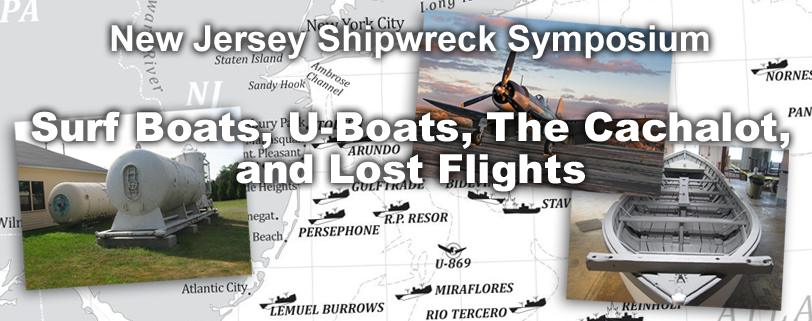The History of InfoAge Science & History Museums
ENIAC development “impelled” by Camp Evans projectENIAC — the Electronic Numerical Integrator And Computer — was the first computer with all-electronic processing that could be programmed for general-purpose applications. Earlier computers were all-electronic and single-purpose, such as Britain’s Colossus, or electromechanical and general-purpose, such as IBM’s Automatic Sequence Controlled Calculator (better known as the Harvard Mark 1). ENIAC was designed and built by civilian employees of the University of Pennsylvania Moore School of Electrical Engineering. Parabolic radar antenna research here at Camp Evans was part of the reason ENIAC happened.
Many people worked on ENIAC. Its co-fathers were physics Prof. John W. Mauchly and graduate engineering researcher J. Presper Eckert. Mauchly, in a three-part series of Smithsonian oral histories throughout the 1970s, explained that Penn’s contract to do Army math led him to stop thinking about an electronic computer and start actually building it. The relevant transcripts are here and here. Learn more about ENIAC in the computer history wing here at InfoAge, produced by Vintage Computer Federation.
“I began to get involved in a project which had been obtained from the Signal Corps in New Jersey. They wanted calculations made on a theoretical basis as to what radiation patterns you would expect in various kinds of antennas. These were antennas that would be used in radar work where you have a small antenna somewhere near the focus of the large reflecting dish, as they called it, and so there were actually two teams working on correlated projects there. One set of people tried to make experimental measurements of the apparatus that I was trying to get the calculations made on. These were essentially parabolic reflectors, but with different portions of the parabolic reflector removed, which would affect half the distribution of radiation away from the target, and might conceivably make a little more energy available at the target, but certain, although the pattern of how what they called the side lobes of the antenna pattern, behaved,” Mauchly said.
“In doing that, they came up with some pretty serious implementation problems. Nobody seemed to know just how to arrange the calculations actually to do this… But that was not the only problem. The problem was also that at the Moore School, what calculating instruments existed besides the differential analyzer? Practically none. Every engineer, of course, had a slide rule, and every engineer was expected to know how to use a slide rule. Slide rules were good enough for his homework, daily classwork, laboratory work, etc. But there was to my knowledge, only one digital desk computer, an old Friden, which was available around the Moore School to do multiplication with, and of course, it could do division if you used it right. They had an adding machine in the main office for the secretary to add up the bills or something. But there was nothing available to me but one desk computing machine, which was there for a very singular purpose; namely, to perform test calculations, as I understood it, to see whether the differential analyzer was correctly set up. This is, I believe, in 1941-42,” Mauchly said. “During that time of course, I was painfully aware that if you already had an electronic automatic calculator of some kind, presumably, you could short circuit this. You could get the results that we were laboring months over, in maybe half a day or less.”
“As I remember, we were always late in the performance, but this is a somewhat chronic thing which develops whenever you have the deadline set by somebody who doesn’t understand all the work that’s involved to do it. So when you’re out after a contract with the Signal Corps and they say: “We want this in six months”, you say: “Aye, aye, sir”, and take the contract. You worry about it later, whether you can get it in six months. So that’s the main organizational mechanism by which we got things started. And here I was supposed to do a Signal Corps contract and they only had one desk calculating machine. So we tried to remedy that by various means. The first thing I could do was to try to persuade Ursinus, which had one Monroe automatic multiplying desk calculator, try to persuade them that we needed it more than they did. This was not automatic. I had to fight for it.”
“But I succeeded, and so we got that. You understand, of course, that this machine–the factories that were normally building such desk calculators, the Friden, the Marchant’s, and the Monroe’s-apparently were all diverted toward building parts for mechanical gun fire control devices or for fuses in large shells, or whatnot. There were all kinds of things to which the factories which had been accustomed to doing, making mechanical computers, were diverted for munitions work. So there was probably an extra demand, too, for desk calculators for other purposes other where in the Government. At any rate, you had to have a priority to obtain delivery on a desk calculator of any kind. Dr. Brainerd and others seemed to think that they couldn’t get a priority, that it would be almost impossible for them to persuade the Signal Corps or somebody to give them the necessary papers so we could order another desk calculator and get it delivered to us. I think we finally did get one through that route. The Moore School wound up with one extra desk calculator, in that case, obtained on the priority system, but altogether even then that would only be three, you see. We needed more.”
“The Wharton School of Business, however, taught courses in statistics and had what they called a Statistical Laboratory. So two blocks away on the Pennsylvania campus, the Wharton School had something like 10 or 12 desk calculators. We borrowed as many of those as we could so as not to deplete their teaching requirements, and during the holidays when there were no students supposedly needing them, why we borrowed all of them and hired as many students as we could to sit. The students, of course, were part-time most of the school year and so you did shifts. You’d have one student using the machine for a couple of hours and then another student comes in and use it for a couple of hours, things of that sort.”
“At the end of 6 or 8 months, we at least had gotten some of the work done, knew what we were doing, had checked out that our integration method had been correctly laid out and planned, and so forth… Then from that point on we went ahead trying to do this thing, but we far over-ran, of course, the promised time for doing this because, first of all; we didn’t have the organization; we didn’t have the equipment; and as far as I was concerned, we didn’t have an electronic digital calculator of the kind that I kept talking to people about in the preceding time at the Moore School and kept saying, this is the way to do it. So that project as it stood, however, of course, didn’t convince anyone either. The Signal Corps was only interested in getting its results and when they got the results that we gave them, they thought that was fine and the school got a follow-on to do more of the same, I believe. So we had more of this calculation to do by desk calculators and no chance at building a computing device that would answer those questions and lots of others more efficiently.”
“So as I began to see it then, after the first year or so of working at the Moore School, the only real hope seemed to be in understanding what the needs were of the Ballistics Research Laboratory because they were more and more needing firing tables computed and were falling further and further behind in getting their output. It was literally true that they weren’t keeping up to the schedule of the production of guns, or even the shipment. Guns could be shipped to France long before there were any tables telling them how to aim them. So after they had hired a few girls to keep the analyzer running in two shifts instead of one, the next thing they did was to try to hire and train girls for using Friden desk calculators for step-by-step integration. They took about two weeks to go through the process of computing one trajectory and there were many, many trajectories, of course, for a firing table for one gun. So they had a hundred girls or so around that place in 1943 to try to get the artillery tables computed and still they were falling behind. By that time then we had, you might say, the atmosphere which would lead to somebody being interested in a new method which would try to cure bottlenecks, such as an electronic computer.”
“Well, I had already done the talking before I wrote that up. I talked first, of course, to Eckert in 1941 in that summer course. I continued to talk to him from time to time on this. I was impelled, you might say, to come back to that subject every time that I got fed up with the slowness of the hand calculations on the Signal Corps project, for instance.”
Original Publication Date Unknown
We Need Your Help! Volunteer with Us.
Join our mission to preserve historic Camp Evans and teach the public about science and history.
Sign up to join our team of volunteers and start on your own mission today.
InfoAge Science & History Museums
2201 Marconi Road
Wall, NJ 07719
Tel: 732-280-3000
info@infoage.org
webmaster@infoage.org

